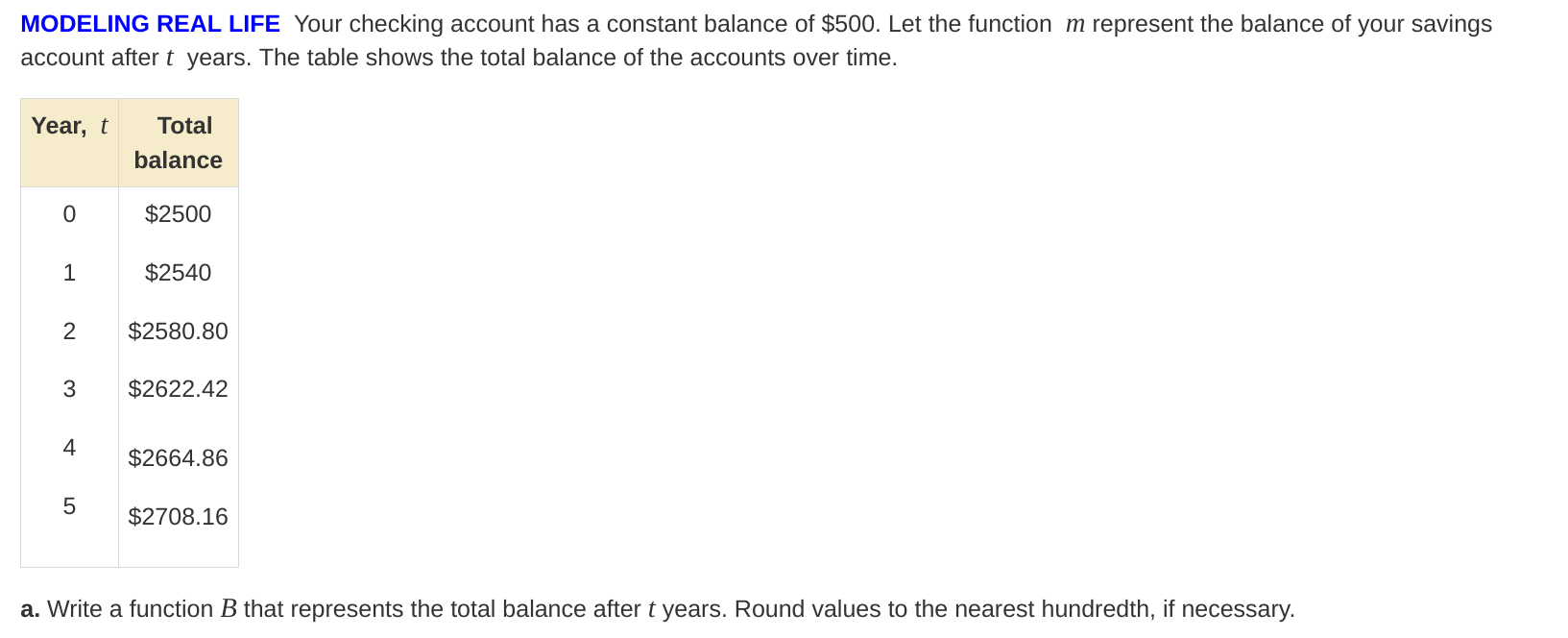Write a function B that represents the total balance after t years. Round values to the nearest hundredth, if necessary.

Understand the Problem
The question is asking us to create a function that models the total balance of a checking account over time, specifically after a certain number of years. We need to analyze the provided data to derive this function appropriately.
Answer
The function is given by $B(t) = 2500 + 41.63t$.
Answer for screen readers
The function that represents the total balance after ( t ) years is
$$ B(t) = 2500 + 41.63t $$
Steps to Solve
- Identify the initial balance and the changes over time
The initial balance at year ( t = 0 ) is $2500. As time progresses, we note the total balance for each year.
- Calculate the increase in balance per year
To find the total increase in balance from year 0 to year 5, we calculate:
[ \text{Total increase} = B(5) - B(0) = 2708.16 - 2500 = 208.16 ]
Now, we divide this increase by the number of years (5 years):
[ \text{Annual increase} = \frac{208.16}{5} = 41.632 ]
- Write the function for the total balance
The total balance after ( t ) years can be expressed as:
[ B(t) = 2500 + (41.632 \cdot t) ]
Where:
- ( B(t) ) is the total balance after ( t ) years.
- ( 2500 ) is the initial balance.
- ( 41.632 ) is the annual increase rounded to the nearest hundredth.
- Final function formulation
The final function representing the total balance is:
[ B(t) = 2500 + 41.63t ]
The function that represents the total balance after ( t ) years is
$$ B(t) = 2500 + 41.63t $$
More Information
This function indicates that the account balance increases at an approximate rate of $41.63 each year, starting from an initial amount of $2500.
Tips
- Rounding too early: Ensure calculations for annual increase are kept to multiple decimal points before rounding to the nearest hundredth in the final function.
- Not correctly interpreting the problem context: Make sure to understand that the constant addition to the balance is due to annual interest or deposits.
AI-generated content may contain errors. Please verify critical information